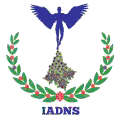REVIEW PAPER
Aquaculture and agriculture-by products as sustainable sources of omega-3 fatty acids in the food industry
1
Universidade de Vigo, Nutrition and Bromatology Group, Department of Analytical and Food Chemistry, Faculty of Sciences, 32004, Ourense, Spain
2
Centro de Investigação de Montanha (CIMO), Instituto Politécnico de Bragança, Campus de Santa Apolonia, 5300-253 Bragança, Portugal
3
Nutrition and Food Science Area, Preventive Medicine and Public Health, Food Science, Toxicology and Fo-rensic Medicine Department, Universitat de València, Faculty of Pharmacy, Avda, Vicent Andrés Estellés, s/n, Burjassot, 46100 València, Spain
Submission date: 2021-11-01
Final revision date: 2021-12-02
Acceptance date: 2021-12-06
Online publication date: 2021-12-17
Publication date: 2022-02-01
Corresponding author
Francisco J. Barba
Nutrition and Food Science Area, Preventive Medicine and Public Health, Food Science, Toxicology and Fo-rensic Medicine Department, Universitat de València, Faculty of Pharmacy, Avda, Vicent Andrés Estellés, s/n, Burjassot, 46100 València, Spain
Nutrition and Food Science Area, Preventive Medicine and Public Health, Food Science, Toxicology and Fo-rensic Medicine Department, Universitat de València, Faculty of Pharmacy, Avda, Vicent Andrés Estellés, s/n, Burjassot, 46100 València, Spain
Jian Bo Xiao
Universidade de Vigo, Nutrition and Bromatology Group, Department of Analytical and Food Chemistry, Faculty of Sciences, 32004, Ourense, Spain
Universidade de Vigo, Nutrition and Bromatology Group, Department of Analytical and Food Chemistry, Faculty of Sciences, 32004, Ourense, Spain
Jesus Simal-Gandara
Universidade de Vigo, Nutrition and Bromatology Group, Department of Analytical and Food Chemistry, Faculty of Sciences, 32004, Ourense, Spain
Universidade de Vigo, Nutrition and Bromatology Group, Department of Analytical and Food Chemistry, Faculty of Sciences, 32004, Ourense, Spain
eFood 2021;2(5):209-233
KEYWORDS
omega-3 fatty acidsfood waste valorizationgreen extraction technologiesencapsulation strategiesmarine and plant by-products
TOPICS
ABSTRACT
The valorization of by-products is currently a matter of great concern to improve the sustainability of the food industry. High quality by-products derived from the food chain are omega-3 fatty acids, being fish the main source of docosahexaenoic acid and eicosapentaenoic acid. The search for economic and sustainable sources following the standards of circular economy had led to search for strategies that put in value new resources to obtain different omega-3 fatty acids, which could be further employed in the development of new industrial products without producing more wastes and economic losses. In this sense, seeds and vegetables, fruits and crustaceans by products can be an alternative. This review encompasses all these aspects on omega-3 fatty acids profile from marine and agri-food by-products together with their extraction and purification technologies are reported. These comprise conventional techniques like extraction with solvents, cold press, and wet pressing and, more recently proposed ones like, supercritical fluids fractionation and purification by chromatographic methods. The information collected indicates a trend to combine different conventional and emerging technologies to improve product yields and purity. This paper also addresses encapsulation strategies for their integration in novel foods to achieve maximum consumer acceptance and to ensure their effectiveness.
We process personal data collected when visiting the website. The function of obtaining information about users and their behavior is carried out by voluntarily entered information in forms and saving cookies in end devices. Data, including cookies, are used to provide services, improve the user experience and to analyze the traffic in accordance with the Privacy policy. Data are also collected and processed by Google Analytics tool (more).
You can change cookies settings in your browser. Restricted use of cookies in the browser configuration may affect some functionalities of the website.
You can change cookies settings in your browser. Restricted use of cookies in the browser configuration may affect some functionalities of the website.



